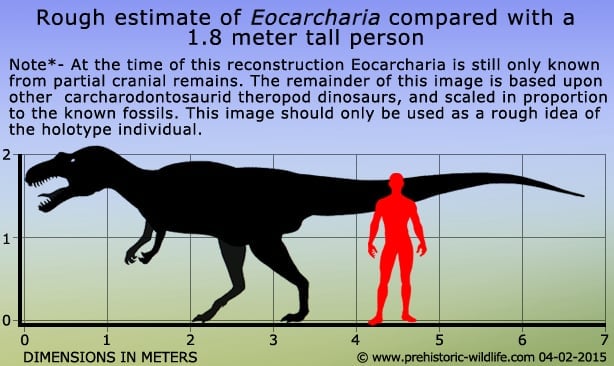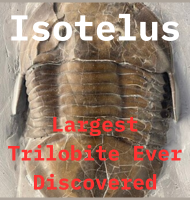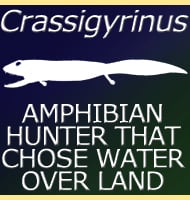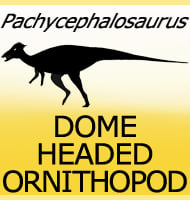In Depth
Even though the name Eocarcharia means ‘dawn shark’, it was actually a theropod dinosaur. This name came about from the serrated slicing teeth that are thought to have sliced through flesh as easily as a shark. The dawn part is a reference to its early appearance to some other related genera. Although only known from incomplete remains Eocarcharia has been identified as being a member of the Carcharodontosauridae, a group of theropod dinosaurs established around the type genus of Carcharadontosaurus, another dinosaur named for its tooth resemblance to a sharks.
Some of the most noteworthy features of Eocarcharia are the enlarged bone growths above the eyes. These features likely served a display purpose, and may have been coloured differently to the rest of the head. Due to the incomplete nature of the remains only a broad ranged size estimate for Eocarcharia exists. This is based upon comparison to its more complete relatives, although it’s not unreasonable that larger estimates approaching twelve meters in length may be accurate given that it is a relative of Giganotosaurus, one of the largest known theropod dinosaurs.
Further Reading
– Basal abelisaurid and carcharodontosaurid theropods from the Lower Cretaceous Elrhaz Formation of Niger. – Acta Palaeontologica Polonica 53(1):15-46. – P. C. Sereno and S. L. Brusatte – 2008.










